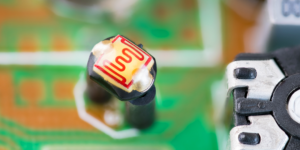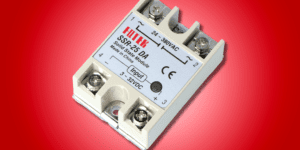Spis treści:
The popularity of 3D printing technology, and indeed the availability of cheaper and easier to use equipment to create spatial models, led to many people wanting to implement these types of projects in amateur workshops. However, home use required filaments that, on the one hand, ensured good printing parameters and, on the other hand, were free from “side effects” (intense smell during 3D printing, harmful fumes, etc.). PLA filaments proved to be the ideal material for a large number of amateurs and semi-professionals and they are now the absolute number one on the list of materials for 3D printing.
PLA filaments – a well-known material in a new version
The abbreviation PLA stands for polylactide, or the polylactic acid known in chemistry and industry. It is a polymer derived from plant materials – more specifically, from fermented starch, obtained for example from cornmeal or cassava. Today, polylactide is most readily associated with PLA filaments, but it is worth remembering that this material was first obtained in laboratories before World War II, long before the development of 3D printing technology. Due to its properties – mainly non-toxicity and relatively easy biodegradability – PLA polymer has long been used in medicine, primarily for the production of surgical sutures and soluble medical implants, such as rods or meshes. Bottles, disposable plates, cups and even bags have also been made from polylactide.
Properties of PLA filaments
Plastics for 3D printing vary widely. The properties of PLA filaments meet the needs of most amateur and semi-professional users, and they can often be used even for creating professional prototypes. The most important advantage of PLA filament is its low melting point – this means that the printer nozzle and table do not need to be heated too much. The temperature suitable for PLA printing is guaranteed by almost all printing devices from the amateur sector. In practice, the most common temperature range in this case is from about 185-195*C to even 235*C for the nozzle and about 50-60*C for the work table. What’s more – 3D pens, distant relatives of 3D printers, also often use this filament. However, it should be noted that a lower melting point also means lower resistance to high temperatures. Nevertheless, PLA filament is not flammable.

One of the advantages of this polymer is its biodegradability (bottles made of this material take only 2-3 months to decompose). PLA filaments are relatively durable, but they should not be drilled – due to the low flexibility of elements made of these polymers, they can either melt or crumble and break. However, the high rigidity is an advantage in some applications, as models printed from PLA filament do not deform under normal conditions. On the other hand, perhaps the most important advantage of 3D printing with PLA filaments is the non-toxicity of these polymers. Thanks to this, they can be successfully used at home, in printers with an open design (without shields that protect against the penetration of vapors into the environment).
PLA filaments available on the market
The vast majority of PLA filaments available on the market are offered at very affordable prices. Most of the time, these materials can be purchased in 1 kg spools, which means that 1 piece of the product contains even over 300 m of fibers. Most printers require the use of PLA filament with a diameter of 1.75 mm, while in stores we can easily find PLA filaments with fibers with a diameter of 2.85 mm. Among the most popular manufacturers of consumables for 3D printers are brands such as Spectrum, Devil Design and Fiberlogy. Very often, the production of filaments is also a separate branch of activity of the creators of 3D printing devices – so the market includes, for example, PLA filaments from Velleman.
Colors
For designers of figurines or prototypes, in addition to the physical parameters, the color of the filament is also very important. In some cases, you may choose to paint or varnish models created with a 3D printer, but the wide variety of colors of PLA filaments means that this is not necessary at all. You can find fibers in a very wide variety of colors in stores, including filaments with an effective metallic sheen. The possibility of combining colors is of particular importance with those 3D printers that allow you to print filaments from two or more spools at the same time to get a multicolored model.
Filaments for 3D printers
Summing up
Biodegradable PLA filaments are ideal consumables for home 3D printer users. They will appeal to makers, artists, or workshop owners, but there are no barriers to professional design firms using this polymer either. PLA filaments prove themselves in many situations – as long as the model made from them is not exposed to high temperatures and significant stresses that could cause it to break. No wonder that the non-toxic, almost odorless and available in many colors PLA filaments are currently the number one consumable for hobby and semi-professional printers.
Facebook
Instagram
Youtube
Twitter
How useful was this post?
Click on a star to rate it!
Average rating 0 / 5. Vote count: 0
No votes so far! Be the first to rate this post.










